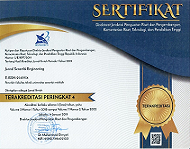Microbial Hyaluronic Acid Production: A Comprehensive Review of Strategies, Challenges and Sustainable Approaches
Keywords:
hyaluronate acid (HA), fermentation, glukosa, streptococcus zooepidemicusAbstract
Medical-grade hyaluronic acid (HA), typically extracted from animal sources or produced by microbial fermentation, offers a wide range of benefits, including wound healing and joint pain relief. However, current methods of extraction from animal tissues, such as eye corneas, umbilical cords and rooster combs, are limited in terms of future raw material availability. Microbial HA production offers several advantages over animal extraction: increased reproducibility and scalability, shorter production times, and yield optimisation through genetic engineering and mutations. This review provides a comprehensive literature survey on microbial HA production, including a comparative analysis of production methods, key challenges and future prospects. Key challenges such as fermentation optimisation, HA purification and contamination are highlighted along with potential solutions. Recent advances and applications of HA in various fields are analysed to understand future opportunities and growth potential. Techno-economic analyses highlight the importance of balancing production costs with desired HA properties. This review aims to provide valuable insights for the development of efficient, sustainable and economical microbial HA production methods and to drive progress in the field. Continued research and development efforts focused on improving fermentation efficiency, downstream processing techniques and host strain engineering are essential to maintain cost effectiveness and scalability in the face of an ever-growing HA market.
















